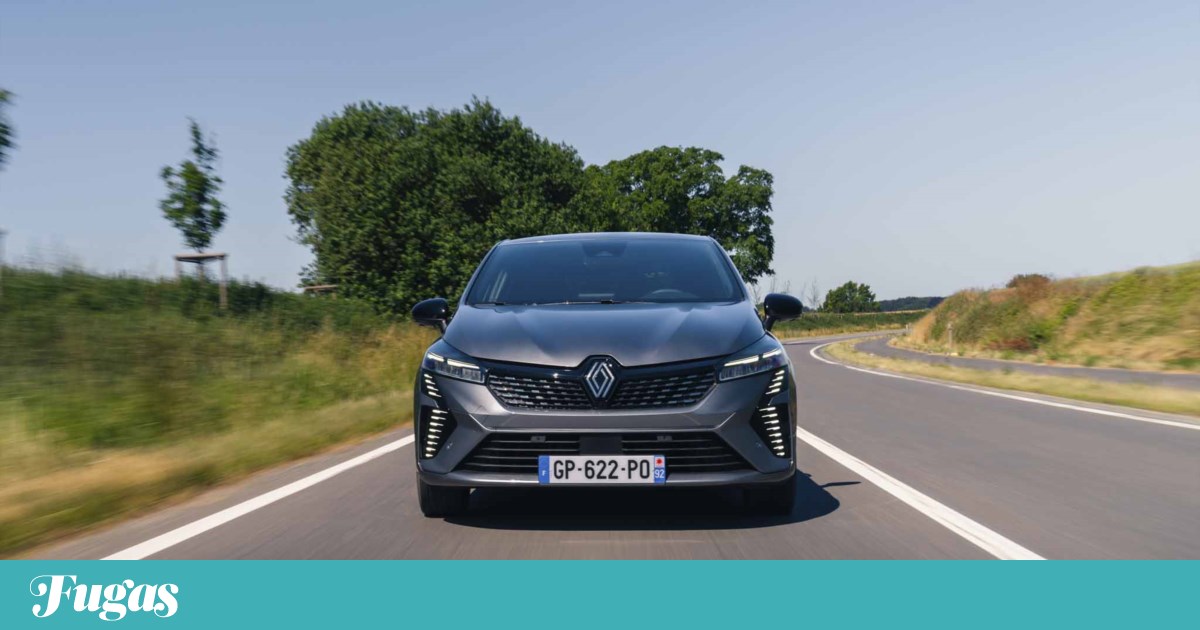More than 16 million units sold, twice the International Car of the Year (in 1991 and 2006), and in Portugal, it was one of the best-selling cars since its launch, holding first place on the podium for six consecutive years (the brand was 23), until 2021, when it was abandoned by the Peugeot 2008, which has remained in the lead ever since.
Therefore, the importance of the Clio to Renault should not be ignored. And in the center of the so-called RenaultIn other words, a revolution for the brand, with yet another look at the way it wants to establish itself on the road, the model is an important milestone, after the Austral, which has won several awards, including Car of the Year in Portugal, and the Espace, recently presented in Portuguese territory.
Renault Clio thus adopts a design language inspired by Gilles Vidal, with its checkered grille, giving it a sporty touch, which, in this particular case, thanks to its play of colors (darker in the centre, around the diamonds, in satin chrome, and polished on the front, which brightens towards the edges), also indicates a technological realm. And with the right to appear for the first time: the light signature of the daytime running lights, in LED, which forms, vertically, stands out in a semi-diamond. The headlights, also in LED on all versions, are slimmer and have up to five high-tech beams that automatically adapt the light distribution between the low and high beams. The upper trim also includes a small aerodynamic deflector below the grille, from which the brand has sought inspiration in the world of motorsport.
As for the rear, the bumper is renewed with aerodynamic air vents that widen the car and the taillights, with transparent covers that allow a peek into the interior.
The model update also had to undergo a new technological life and the Clio is now offered with a digital instrument panel, 7 or 10 inches, the latter capable of duplicating navigation maps, adapting the displays to the driving mode and the selected Multi Sense setting. In terms of connectivity, Renault Easy Link, a multimedia portal that gives access to a wide range of applications, such as navigation, proactive maintenance and Information and entertainmentavailable with either a 7- or 9.3-inch screen (standard on the new Esprit Alpine model level).
Finally, the Clio remains adept at offering proposals for all needs, with a range that includes mechanical petrol (TCe 90), petrol and LPG (TCe 100), diesel (DCi 100) and, since 2020, E-tech full hybriddesigned to deliver more power (from 140 to 145 hp), and therefore better performance (it now accelerates from 0 to 100 km/h in 9.3 seconds instead of the previous 9.9) without compromising consumption or emissions, which remain at 4.2 l/100 km and 95 g/km – and on a mixed ride on the outskirts of a busy city like Brussels, we can see the savings, averaging 4.1 l/100 km.
Cheaper
With the renewal of the fifth generation’s livelihood, the equipment versions have also been revised. The range will start with Evolution, then move to Techno and the new Esprit Alpine. For now, the last two options are available for configuration and ordering (the cars will start arriving in the fall), but it’s already confirming what the brand has said from the start: That this Clio will arrive cheaper than its predecessor. The Techno version retails from €21,400* and the Alpine Esprit from €23,700, when offered by the TCe 90, representing a saving of nearly €1,500 compared to the previous range. Either version (the top of the range replaces the discontinued RS line) brings more equipment, especially in terms of driver assistants, Renault Portugal confirms.
In all, there are about twenty driving, parking and safety aids, among which Active Driver Assistance – which combines Cruise Adaptive function, stop, auto start, lane keep – camera with 360° view and active emergency braking with sensors for cyclists and pedestrians.
Inside, the decision to ban materials of animal origin stands out. In the case of the top of the range, the seating is made from sustainable materials, including 72% recycled fabric (polyethylene) on the seat and back, and 13% recycled grained fabric on the seat sides. In the Techno version, door panels and dashboard Covered with a fabric containing up to 60% Tencel modular fibers, which are bio-cellulosic fibres.
Available in seven colors – Glacier White, Star Black, Rock Gray, Iron Blue, Flame Red, Valencia Orange and Rafale Gray – the wheels can be made of light-alloy and have a diameter of 17 inches. Among the equipment list are a number of amenities, such as automatic air conditioning or a supercharger. smart phone Wireless.
In terms of roominess, the Clio, as a B-segment car, is still friendlier to those in the front, but a trip with the back seat occupied can be made with some effort (unless you’re dealing with small children, in which case that’s no problem). The trunk stores up to 391 liters, which can grow to 1,069 liters with the second row of seats folded down; The hybrid has more limited storage space, but it’s still quite interesting (301 liters).
*In the 22-07-2023 issue of Fugas only the Esprit Alpine version was mentioned, which was the only one available at the time of closing

“Wannabe internet buff. Future teen idol. Hardcore zombie guru. Gamer. Avid creator. Entrepreneur. Bacon ninja.”

